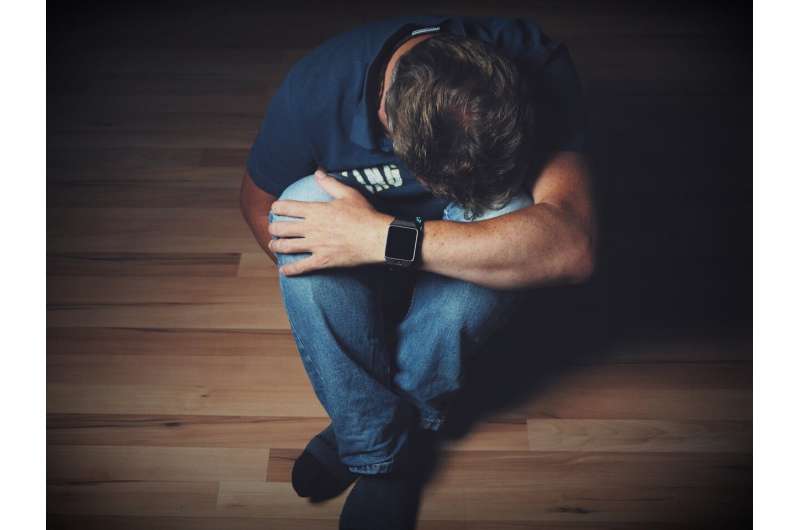
Source: Pixabay/CC0 Public Domain
There is such a demand for magnet therapy for persistent depression in the Twin Cities that Allina Health has doubled its capacity with the opening of a new mental health center in Fridley, Minnesota.
Although antidepressants and talk therapy are still the first options, said Allina psychiatrist Dr. Bennett Poss that alternatives are needed for the growing number of patients who are not helped by these treatments alone. Transcranial magnetic stimulation has been an option in the US for 15 years, but emerged in the post-pandemic era as more people sought treatment for depression and more research confirmed its potential.
“Evidence-wise, it’s one of those things that actually turned out better, or at least as advertised,” said Poss, who provides TMS at Allina’s Abbott Northwestern Hospital in Minneapolis. “There are so many things that look good in clinical trials that then end up in patient care that aren’t as good.”
TMS involves magnetic coils placed on the scalp for about 30 minutes and sending pulses to the brain, usually to a golf ball-sized target in the left front that regulates mood. After one to two months of treatment five days a week, about half of patients report some benefit and a third see a remission of depressive symptoms, studies show.
Poss likened it to lifting weights or running, and he said it stimulates a part of the brain that is underused in people with depression.
“We use it more often than you otherwise would, and over time it produces some of the same changes in the body as exercise,” he said.
More than 23% of Minnesota adults reported having experienced depression in 2022, up from 15% in 2011, according to survey data from the Centers for Disease Control and Prevention. Minnesota went from below the national average to at or slightly above it during that period.
TMS is only recommended for a fraction of patients diagnosed with major depressive disorder, which is characterized by severe and prolonged sadness and hopelessness. But clinicians said it is also being diagnosed more often.
“The nice thing about (TMS) is that once people have had the treatment, if they respond to it, they don’t necessarily have to continue with it. So it’s different in some ways than medication,” said Dr. Sophia Albott, who directs the adult mental health division at the University of Minnesota.
The treatment has its origins at the University of Minnesota, where Dr. Ziad Nahas was involved in clinical trials that convinced the U.S. Food and Drug Administration to approve it in 2008 as a treatment for major depression in adults.
Albott said magnetic therapy was originally limited to patients who had tried the therapy and had no success, or had serious side effects, with at least four antidepressants. The federal Medicare program recently expanded its coverage so that patients only had to try two medications before qualifying for TMS, which partly explains the recent growth in Minnesota.
Coverage in Minnesota varies by insurance plan and employer. HealthPartners typically uses prior authorization in its plans to ensure patients have tried other treatments first, but Medica does not use that restriction.
Albott said she hopes it becomes more of a first-line therapy, though the time investment will remain a barrier, along with the roughly $10,000 cost that is shared between patients and insurers. Recent research has sought to predict which patients respond best to TMS, whether it substantially increases interest in daily life and reduces suicidal impulses, and whether it can be expanded for use in adolescents and for neurological conditions such as stroke.
The treatment is already approved for smoking and obsessive-compulsive disorder, and some researchers think it could treat the ringing in the ears condition known as tinnitus, which has also reportedly increased during the COVID-19 pandemic.
Becky Steffens, 39, of Coon Rapids, didn’t believe it would work, not after 15 years of dealing with depressive symptoms. Success at the University of Minnesota’s Treatment-Resistant Depression Clinic came when her doctors switched sides and sent magnetic pulses to the right side of her brain. Research has shown that some patients need stimulation on that side to regulate another part of the brain that fuels negative thoughts.
The treatment was not easy because it disrupted work and was noisy and uncomfortable, she said. “It’s like a little bird pecking at the same spot on your head over and over again for fifty minutes.”
It wasn’t a one-time success either, as she required two rounds and maintenance treatments once a week, along with other depression therapies. But TMS gave Steffens complete remission for several months and reduced symptoms the rest of the time, allowing her to discover joys in life such as painting and volunteering.
“I can have a baseline where I’m not necessarily happy and cheerful and everything is great,” she said, “but I’m also not sad and stuck. I feel like it’s a place where I can have emotions, feel them and then come back to a baseline … and not get stuck in those negative, sticky thoughts.”
Poss said there will be a need for other treatments, including more extreme but highly effective electroconvulsive therapy that causes patients to have seizures and “reset” their brains without depressive symptoms. But he said he is especially optimistic about TMS as it becomes more popular and access increases.
2024 StarTribune. Distributed by Tribune Content Agency, LLC.
Quote: Depression Therapy Has a Magnetic Appeal Across Minnesota (2024, July 1) Retrieved July 1, 2024 from https://medicalxpress.com/news/2024-07-depression-therapy-magnetic-appeal-minnesota.html
This document is copyrighted. Except for fair dealing purposes for the purpose of private study or research, no part may be reproduced without written permission. The content is provided for informational purposes only.
 Healthy Famz Healthy Family News essential tips for a healthy family. Explore practical advice to keep your family happy and healthy.
Healthy Famz Healthy Family News essential tips for a healthy family. Explore practical advice to keep your family happy and healthy.


